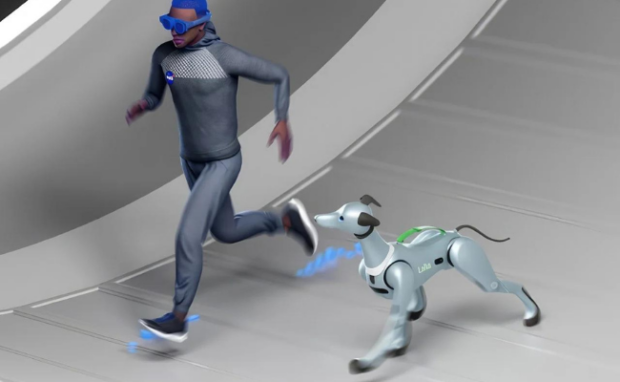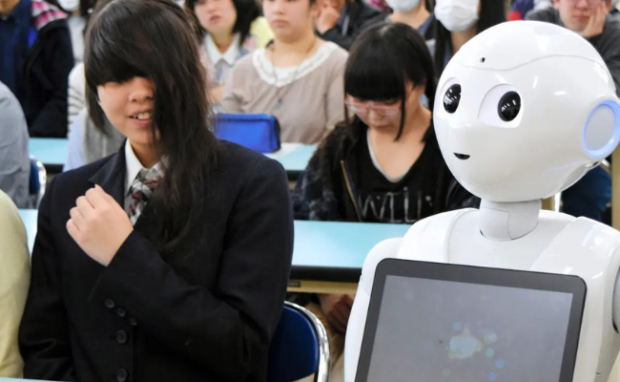Laika robot dog will assist astronauts
In outer space’s cold, dark expanse, astronauts will soon have warmth from an adorable robot companion, Laika. It’s a robotic dog invented by Hongik University student Jihee Kim. Besides being cute, it monitors astronauts’ health, allowing them to approach their human buddies whenever they’re experiencing various conditions.
Scientists have been trying to help humans establish communities on the Moon and other planets. Perhaps we could bring our furry friends to space once that happens, but until then, space crews would rely on robot pets to keep them company. Maybe we’ll adopt the technology on Earth, letting us have machine pet assistants, too.
This article will discuss how a South Korean student designed a robot dog for astronauts. Later, I will cover other recent robotic inventions.
How did the student create Laika?

If the name “Laika” sounds familiar, that’s because it’s the name of the first dog sent to space. That is why Jihee Kim named her new mechanical companion after it.
She built the robot dog in titanium, protecting it from the harsh conditions of outer space. Also, it is a light alloy that enables Laika to walk and jog with their human counterparts.
Most robot dogs seem blocky and alien, such as Boston Dynamic’s one-eyed robot dog. Conversely, Laika has a sleek body that resembles a real-life dog, complete with adorable puppy eyes and cute ears.
What makes Kim’s robo pooch special is it can monitor astronaut health. Its slam cameras, depth cameras, thermal imaging cameras, and ultrasonic sensors enable it to detect objects, people, and space.
The bot also has ECG sensors along its neck, allowing it to check an astronaut’s health during emotional interactions. Moreover, it establishes an emotional connection through expressive multi-joint movements to display love and loyalty.
For example, it wags its tail and shakes its body to display excitement over seeing its human master. As a result, it may elicit the same joy a person may feel when seeing their dog after a hard day’s work.
You may also like: ChatGPT has higher emotional awareness than humans
That may seem trivial, but remember that outer space can be quite lonely. Prolonged isolation can have severe physical and mental impacts on astronauts, so a robot dog’s companionship can be an essential survival tool.
You may have noticed Laika has a strap attached to both ends of its spine. It tightens so an astronaut can attach a small bottle or other object during exercise.
Alternatively, a space explorer could lift that strap to carry the dog. South Korean student Jihee Kim plans to integrate Laika with mixed-reality glasses so that astronauts can communicate with it.
Other recent robotic innovations

It may seem strange to rely on a robot for emotional support in space, but we’re already doing it on Earth. For example, a Japanese city recently deployed robots in its schools to help anxious students return to class.
The Kumamoto City Board of Education chose this drastic measure due to the distressing number of children skipping school. In 2022, it said 2,760 elementary and middle school children weren’t attending classes.
You may also like: Fossils show humans had pet dogs in 10,000 BC
That is twice the 2018 record, so the Board decided to “place robots in classrooms that can be controlled remotely by students who haven’t been attending classes.” They hope the machines may help kids return to school.
The Board of Education claims that “stress, anxiety, and other social, psychological, or emotional issues” prevent these kids from interacting with their peers. One of its spokespersons said, “There are some students who have trouble communicating but have not rejected it entirely.
“These robots provide a way to lower the hurdle to participating in quasi-experiences [with their classmates], and we hope that will then encourage them to take the next step [towards returning to attending class in person].”
Conclusion
Hongik University student Jihee Kim designed a robot dog named Laika to provide companionship to astronauts. The bot monitors their health so that they can assist space crews when necessary.
Designboom says the mechanical pooch is still a conceptual design. Nevertheless, it’s an interesting idea that could make outer space a little bit warmer.
Learn more about the robotic pet for space missions on its Designboom page. Moreover, check out more digital tips and trends at Inquirer Tech.